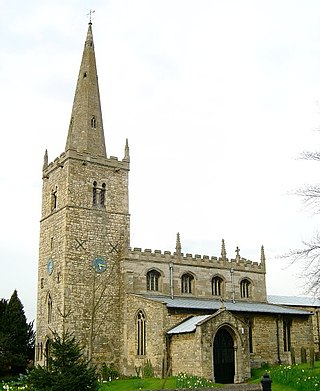
Branston is a large village in the North Kesteven district of Lincolnshire, England, 4 miles (6 km) south-east of Lincoln on the B1188 road to Sleaford. It is the principal settlement in the civil parish of Branston and Mere, population 4,019.

Robert Bertie, 1st Duke of Ancaster and Kesteven PC, styled17th Baron Willoughby de Eresby between 1666 and 1701, and known as 4th Earl of Lindsey between 1701 and 1706, and as 1st Marquess of Lindsey between 1706 and 1715, was a British statesman and nobleman.

Peregrine Bertie, 2nd Duke of Ancaster and Kesteven, styled The Honourable Peregrine Bertie between 1686 and 1704, Lord Willoughby de Eresby between 1704 and 1715 and Marquess of Lindsey between 1715 and 1723, was a British politician who sat in the House of Commons from 1708 until 1715 when he was called to the House of Lords.

Katherine Brandon, Duchess of Suffolk, suo jure12th Baroness Willoughby de Eresby, was an English noblewoman living at the courts of King Henry VIII, King Edward VI and Queen Elizabeth I. She was the fourth wife of Charles Brandon, 1st Duke of Suffolk, who acted as her legal guardian during his third marriage to Henry VIII's sister Mary. Her second husband was Richard Bertie, a member of her household. Following Charles Brandon's death in 1545, it was rumoured that King Henry had considered marrying Katherine as his seventh wife, while he was still married to his sixth wife, Catherine Parr, who was Katherine's close friend.
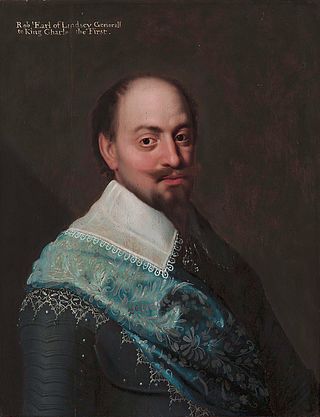
Robert Bertie, 1st Earl of Lindsey KG, previously 14th Baron Willoughby de Eresby was an English peer, soldier and courtier.
This is a list of High Sheriffs of Lincolnshire.

Edward Cecil, 1st Viscount Wimbledon was an English military commander and a politician who sat in the House of Commons at various times between 1601 and 1624.

The Hales Baronetcy, is a title in the Baronetage of England. There were three Hales baronetcies. The oldest was created in 1611 for Edward Hales. He was a member of a Kent family. The second was created in 1660 for Robert Hales, MP for Hythe 1659, also of a Kent family. The third was created in 1660 for John Hales of Coventry, co. Warwick.
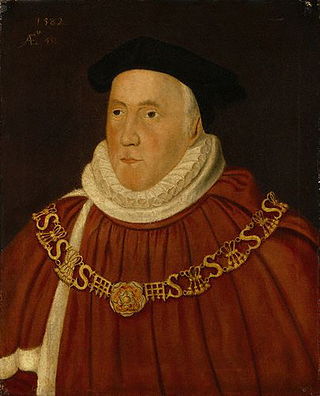
Sir Christopher Wray was an English judge and Chief Justice of the King's Bench.
Bridget Norris, Countess of Berkshire was an English noblewoman, the daughter of Edward de Vere, 17th Earl of Oxford. Bridget was brought up by her maternal grandfather, the powerful statesman William Cecil, 1st Baron Burghley. She was also styled Lady Norris of Rycote and Viscountess Thame. She married Francis Norris, 1st Earl of Berkshire; however, the marriage was not a success, and they separated in 1606.
Elizabeth Norris, 3rd Baroness Norreys of Rycote, suo jure was an English noblewoman. She was the wife of Edward Wray, Groom of the Bedchamber to King James I of England, with whom she eloped in 1622, and incurred the king's displeasure as she was his ward. Elizabeth and her elopement was allegedly the inspiration for Orlando Gibbons Fantazies.

George Hobart, 3rd Earl of Buckinghamshire was a British peer, styled The Honourable George Hobart from 1733 until 1793.
Sir William Wray, 1st Baronet, of Ashby was an English politician who sat in the House of Commons at various times between 1645 and 1660.
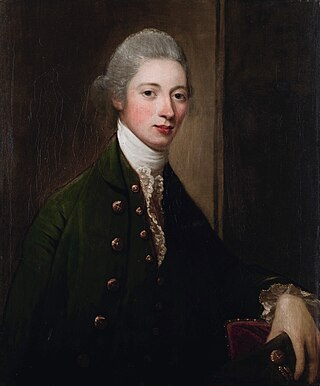
Alexander Leslie-Melville, 7th Earl of Leven was a Scottish Whig politician and peer.
Mary de Vere was a 16th-century English noblewoman who lived a life of extraordinary wealth and privilege. The daughter of John de Vere, 16th Earl of Oxford, and his second wife Margery Golding, she married Peregrine Bertie, 13th Baron Willoughby de Eresby. The couple lived with their six children in Grimsthorpe Castle in Lincolnshire. Following Bertie's death, Lady Willoughby married Sir Eustace Hart. She died on about 24 June 1624.
John Thornton Leslie-Melville, 9th Earl of Leven, 8th Earl of Melville DL JP was a Scottish peer and soldier.
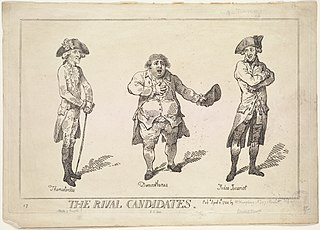
Sir Cecil Wray, 13th Baronet was an English landowner and politician, and one of the Wray baronets.
Edmund Turnor, FRS, FSA, JP, was an English antiquarian, author, landowner and a British politician.

Albinia Hobart was an 18th-century British celebrity. She was the heiress of her father, and became the Countess of Buckinghamshire by marriage in 1793. Her lifestyle and size made her the subject and victim of cartoons by James Gillray and others; she figures in over 50 satirical prints.
Lord Vere Bertie was a British politician, a younger son of the Duke of Ancaster and Kesteven who represented Boston, Lincolnshire in Parliament from 1741 to 1754.














